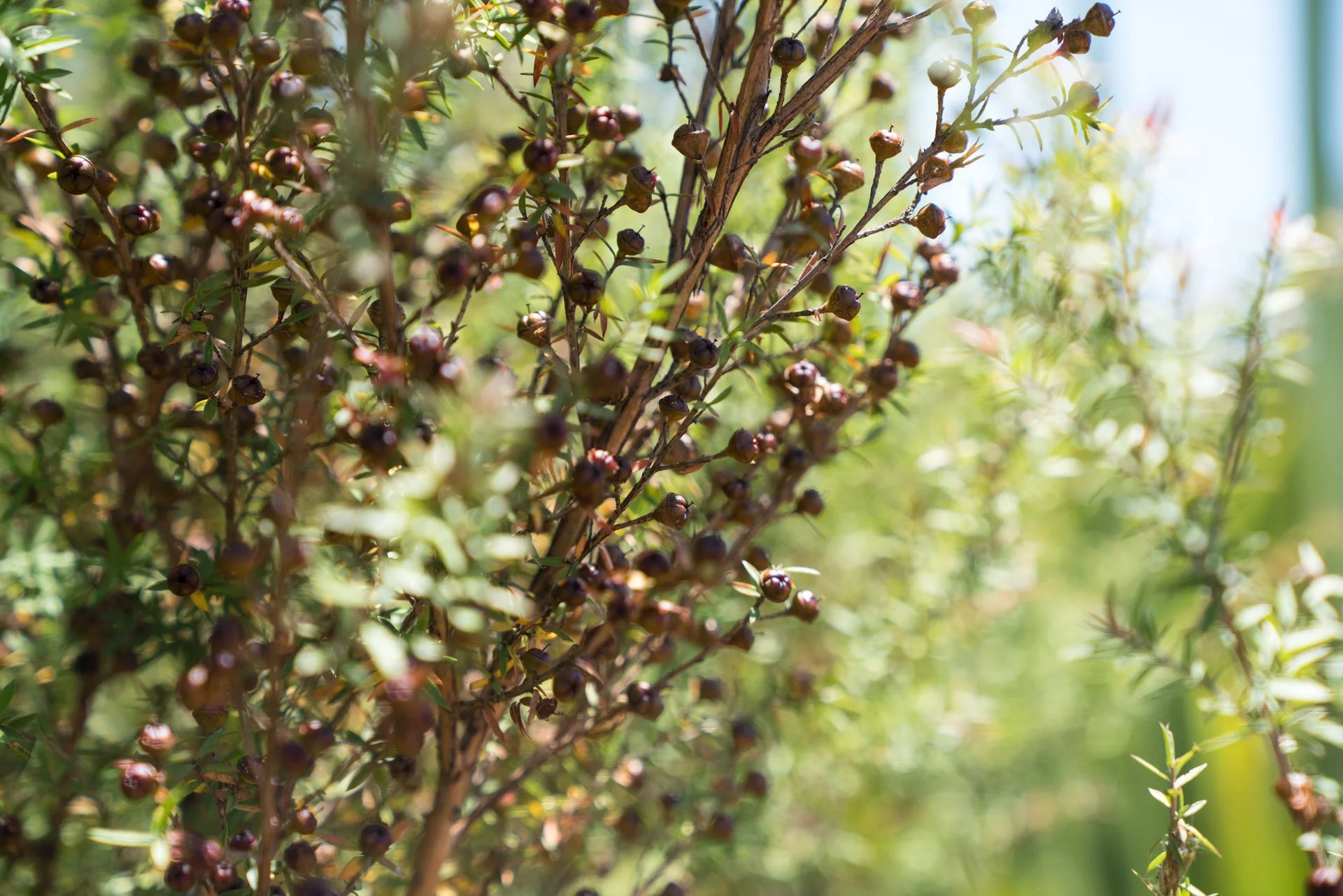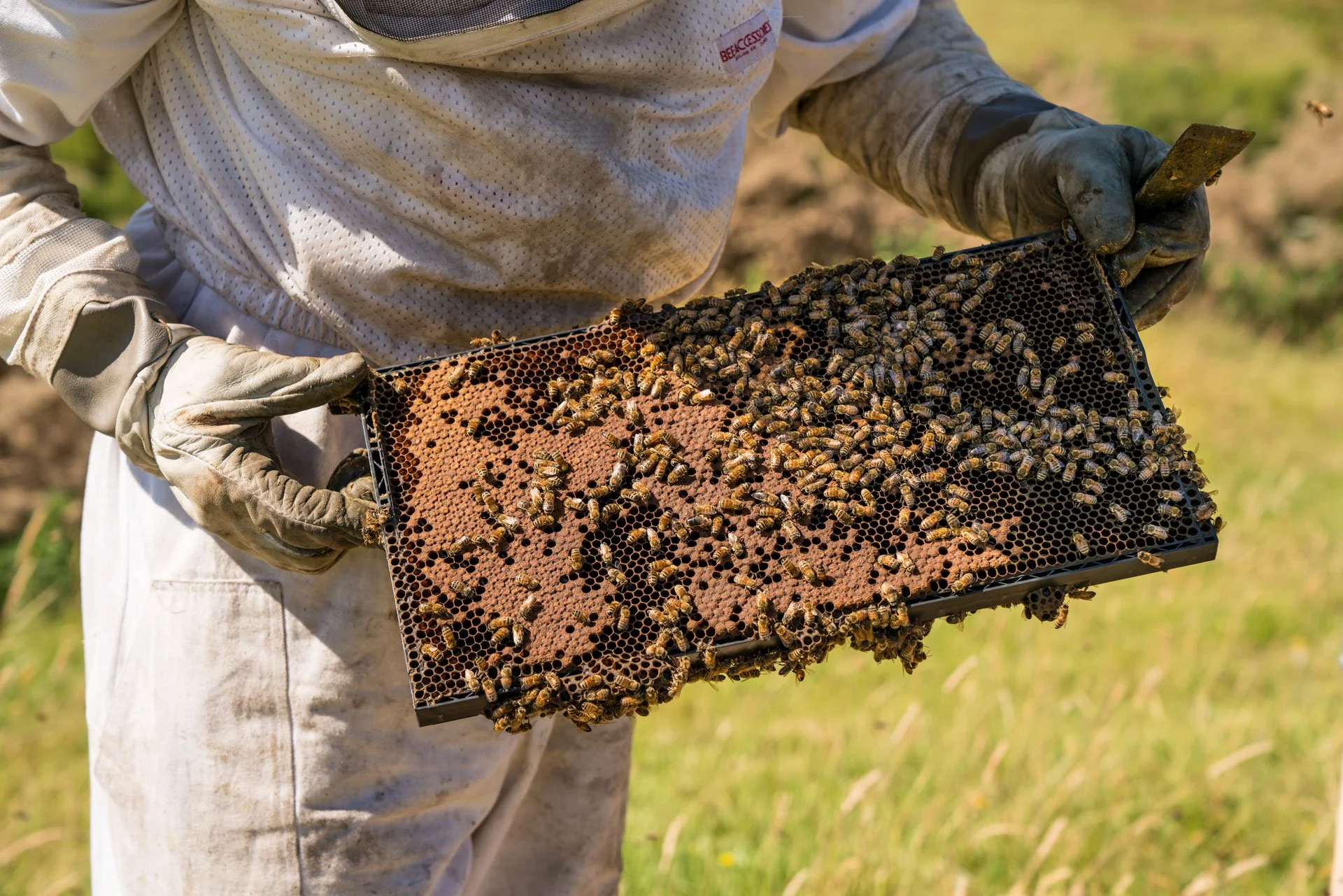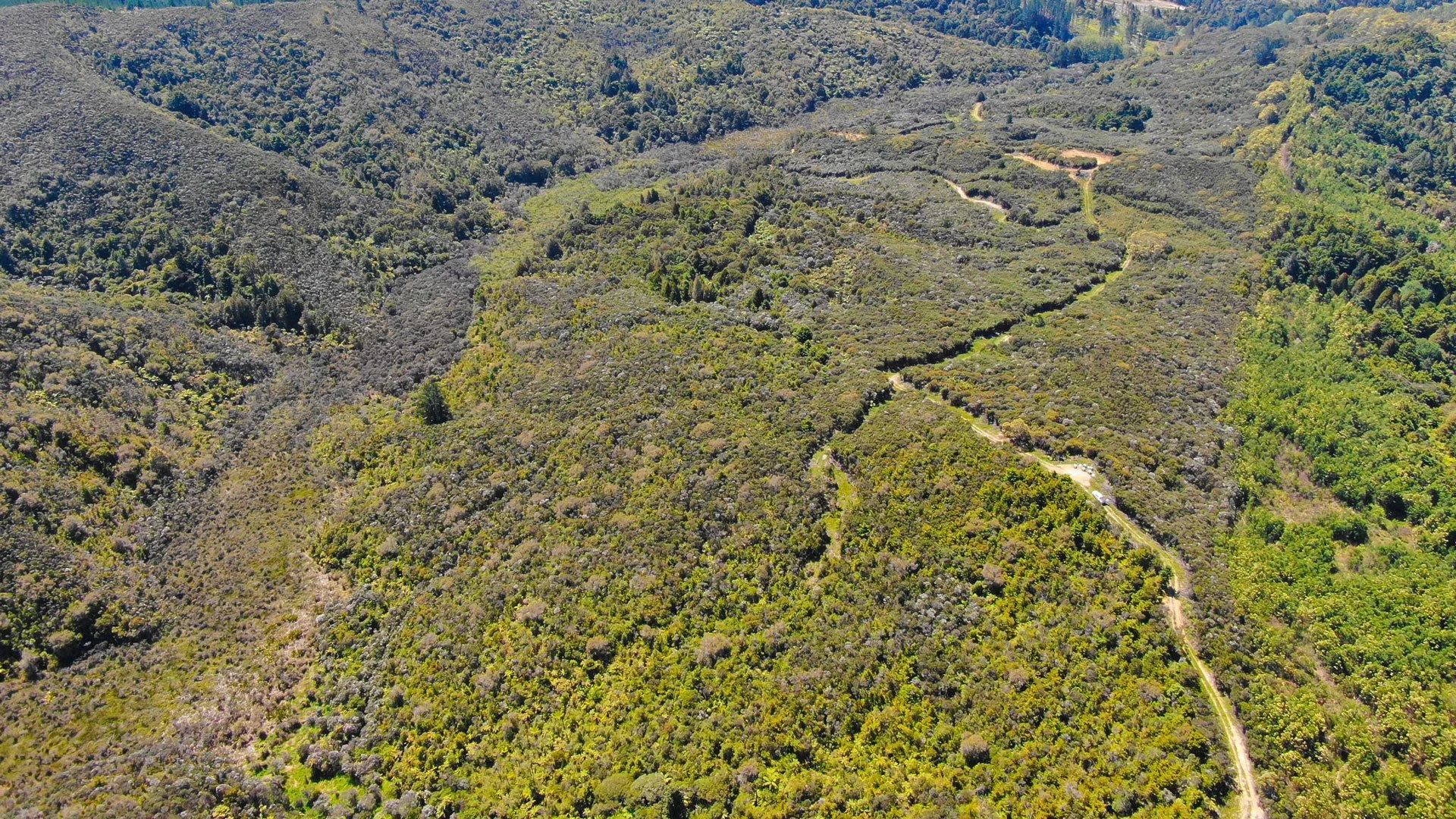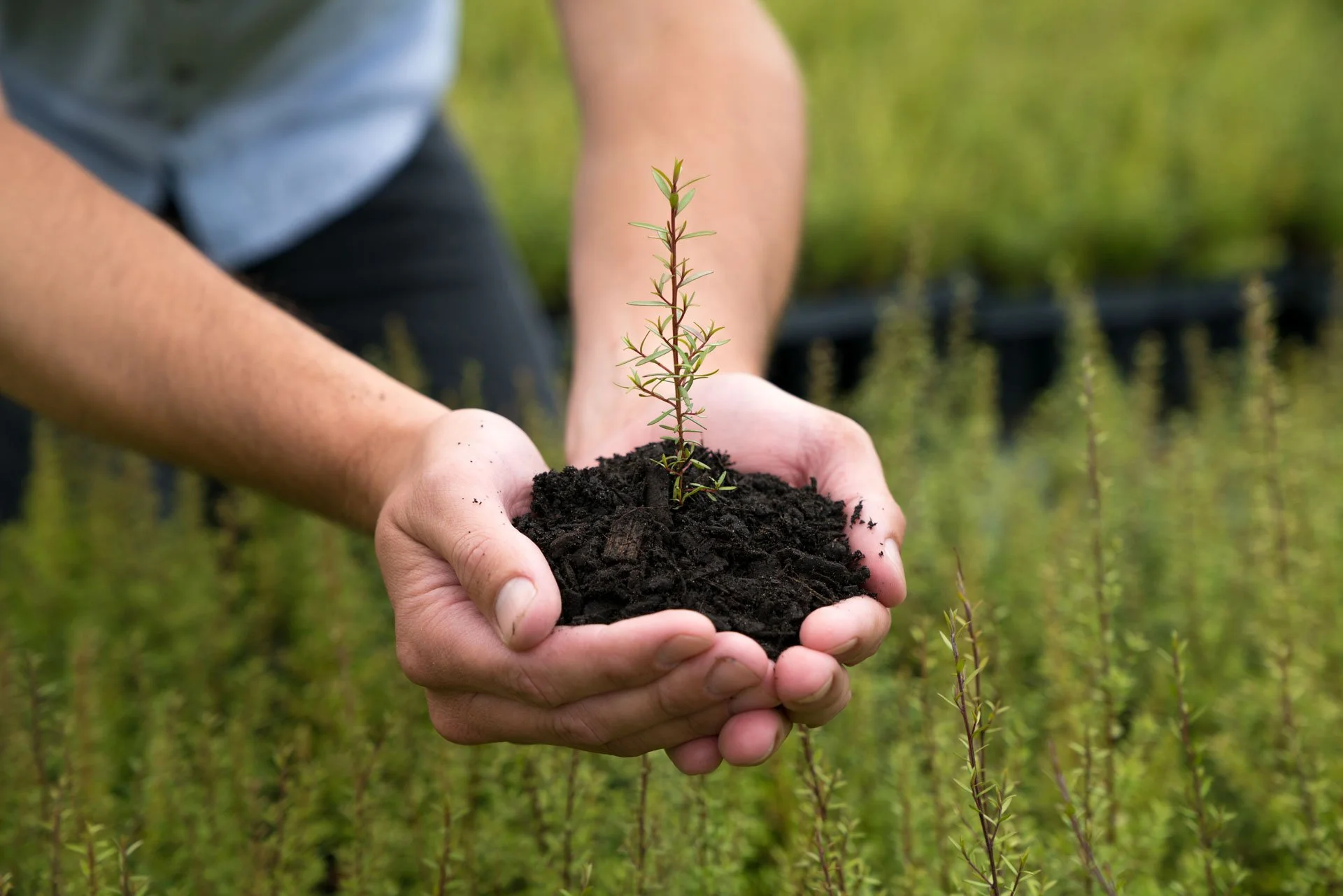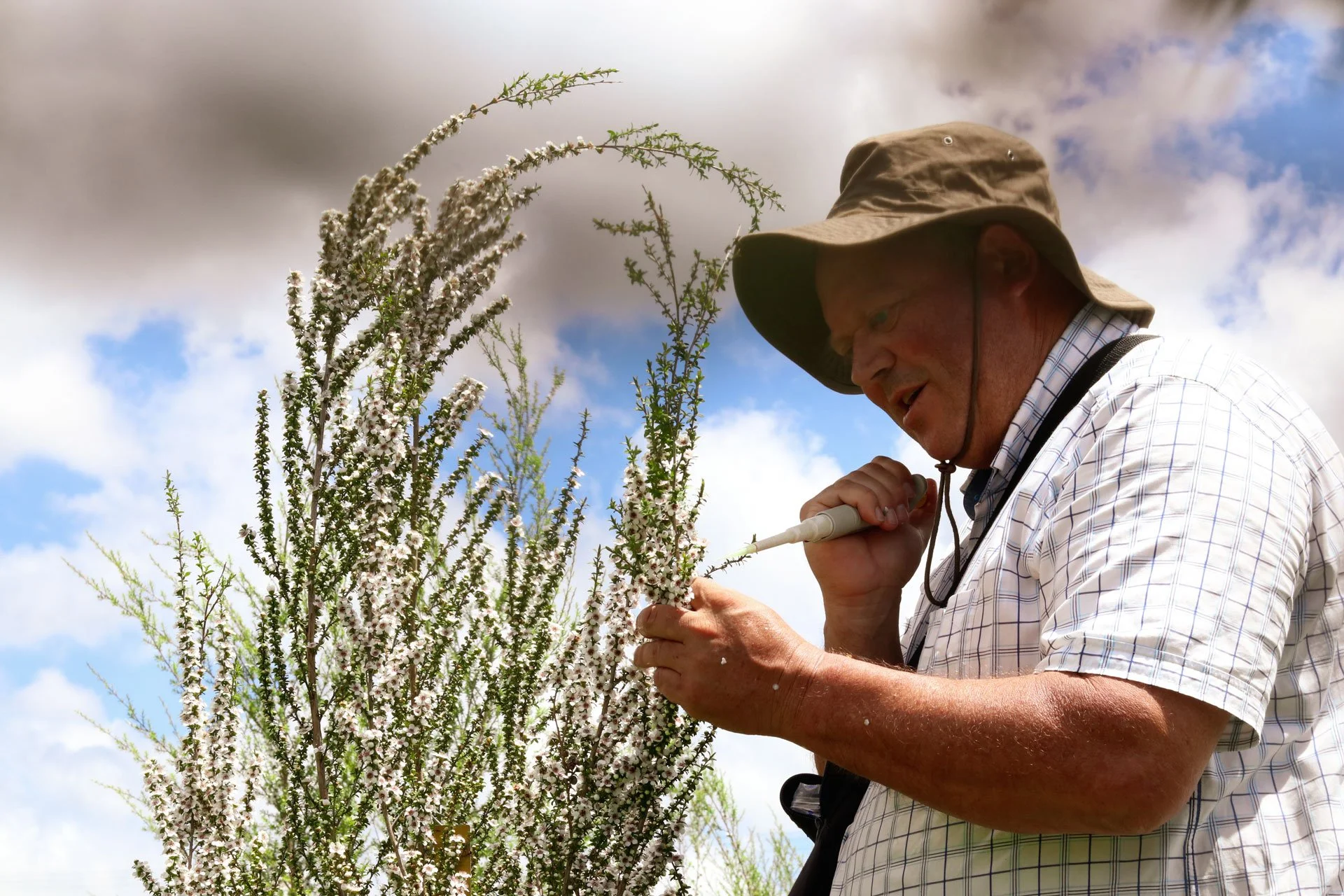The plant that walks through fire
At Kauri Park we believe in the power of plants and we know that here in New Zealand our native plants have superpowers. We also say that ‘we speak for the trees’ so this month we want to put our second favourite plant – the marvellous mānuka – in the spotlight and let it take a bow for all it does for us.
(Yes, you guessed it, for us nothing beats the great kauri).
We’ve been fascinated by the tenacious ‘tea tree’ for decades. It’s a powerhouse plant that was once much maligned but is now being seen for all its incredible gifts. This is a story of redemption and about the power of never giving up – and those are always fun.
So, let’s step back in time and look at the history of mānuka (Leptospermum scoparium). To help us tell that story we’re drawing from Robert Vennell’s awesome book ‘The Meaning of Trees: The history and use of New Zealand’s native plants’. Robert’s background is in ecology and he works as a Collection Manager in the Natural Science department at Auckland Museum, Tāmaki Paenga Hira, collecting and preparing specimens for the natural science galleries. We strongly recommend you check out this book and his site. Here’s a smattering of some of Robert’s insights about the legend that is mānuka.
Medical marvel
Mānuka, Leptospermum scoparium, is the ultimate multi-tasker when it comes to healing powers. Of course, the world of wellbeing is now in love with its honey and we all swear by it for healing burns and skin conditions but of course none of this is new news. Māori have always known the power of the plant, including:
infusing mānuka leaves to reduce fevers and treat stomach and urinary problems;
using decoctions from the bark as a sedative, a mouthwash and to treat fever;
chewing the seeds to treat diarrhoea;
using the gum, occasionally secreted from the branches, to alleviate coughs and as a moisturiser for burns;
Today mānuka essential oils are sought after around the world, famed for their antibacterial, anti-fungal and antiviral properties.
Walking through fire
But our old mate Leptospermum scoparium is more than a healer of people. It’s a healer of the land. Why? Because mānuka has a fire ecology. This means that it has learned how to endure – to not just survive but to thrive – in the extreme conditions of forest fires. Mānuka contains volatile oils that help fires burn hotter and more intensely, and its woody capsules will often spring open when exposed to heat and smoke, scattering their seeds on the recently cleared ground.
“The name Leptospermum means ‘slender seed’, and the thin seeds of this genus are easily carried by the wind.”
So mānuka leaned into fire to help it spread. The plant made fires bigger and more intense and the scorched earth created the perfect conditions for the growth of even more fire-loving plants.
Ecology hero
But what might seem like a destruction habit is, in fact, an ecological virtue. Knowing today how much Aotearoa needs ecological restoration, we can look to the once maligned mānuka to help us capture carbon and be a vehicle for regenerative forestry. Robert Vennell explains:
“Because of its ability to cope with harsh environmental conditions, mānuka plays a critical role in forest regeneration. By colonising disturbed, open environments, it helps provide shade and shelter to more sensitive natives, eventually nurturing this next generation of plants as it grows into a future forest. Because of this ability, it has been widely adopted for use in all kinds of conservation projects, improving ecologically degraded areas and promoting natural regeneration.”
The best DNA for the best DHA
At Kauri Park we’re deeply into eco-sourcing seeds and then understanding how different ecosystems create different outcomes for that same seed. When it comes to mānuka, this means understanding how plant genetics interact with the ecology of the flora and the dynamics of a particular ecosystem in New Zealand so that when we plan mānuka forests we can design to deliver the greatest ‘return on species’ UMF yield.
We’re always happy to share our mānuka passion and expertise so feel free to get in touch if you want to learn more about genetics, eco-sourcing and our research findings.


